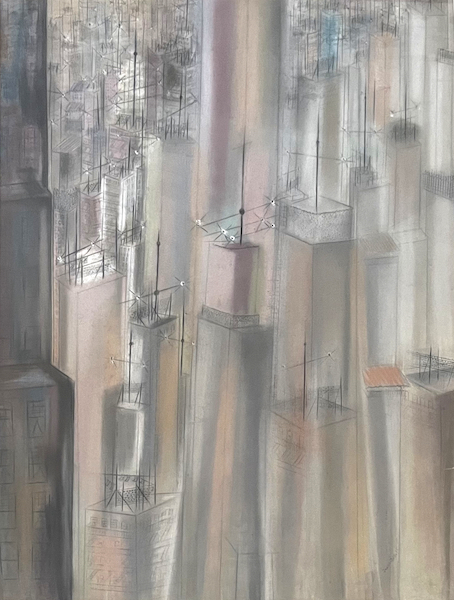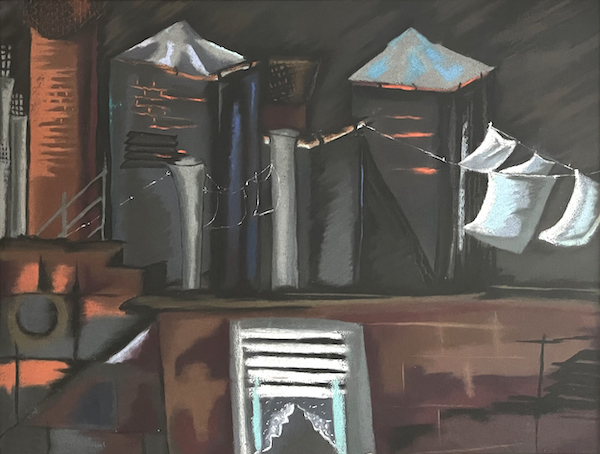Biography
Jolán Gross-Bettelheim was a Hungarian avant-garde artist who began her career in Hungary during the second half of the 1910s. After leaving the country in 1919, she moved through Europe and finally settled and worked in Cleveland and New York in the United States between 1925 and 1956.
She was born in Hungary in 1900 as Jolán Gross. From 1918, she studied painting at the Budapest School of Fine Arts as a student of Edvi Illés Aladár and Róbert Berény, followed by studies at the Kunstgewerbeschule in Vienna between 1919 and 1920 as a student of Emil Orlik. She also studied at the Akademie der Bildenden Künst in Berlin from Karl Hofer, and in Paris at the Académie de la Grande Chaumière between 1922 and 1924.
She married a Hungarian-born radiologist, Frigyes Bettelheim, and settled in Cleveland by 1925. Her studies in Ohio commenced at the Cleveland School of Art with modernist painter Henry Keller. She was an active painter and printmaker, but also created ceramic objects. She contributed to leftist publications such as New Masses and the Daily Worker.
She and her husband relocated to New York City in 1938. The city had a profound effect on her, and resulted in a number of works utilizing an array of mediums, including pastel painting, photography, lithography and etching. Her work was exhibited at MoMA in 1936. She returned to Hungary after 1956, and died in Budapest in 1972.
Her works mostly explore the human experience in modern urbanized society, living in an industrialized modern metropolis and revealing the human aspect. Gross-Bettelheim's art depicts both the familiar and foreign feeling of this world. She was an outstanding artist of the first half of the 20th century, who defied all stylistic expectations of women artists of the era.
Her oeuvre consists of oil and pastel paintings, drawings, lithographic prints, etchings, photographs and ceramics. Her style is a unique blend of expressionism, constructivism, futurism and cubism, also employing elements of surrealism and art deco in some works.
Gross-Bettelheim’s prints explore the darkness of the Depression, employing a cubist style that heightens the drama of cityscapes and the industrial landscape. Sabine Kretzschmar describes Gross-Bettelheim as “the purest modernist” amongst Cleveland printmakers, reflecting the influence of German expressionism, constructivism, and cubism.
Her work explored social and political issues. The plight of unemployment is addressed in her print In the Employment Office (ca. 1936, lithograph) and racism in Workers Meeting (Scottsboro Boys) (ca. 1935, drypoint).
The stark black and white images convey a sense of humanity being oppressed by the scale of industry. For example, Gross-Bettelheim’s ca. 1940 lithograph 'Assembly Line' portrays a claustrophobic space filled with workers and a haunting image of lines of gas masks on a factory assembly line. Her 1936 lithograph Civilization at the Crossroads (Fascism II) depicts the rising threat of Fascism in Europe.
Works in notable public collections: Metropolitan Museum of Art; Brooklyn Museum; Art Institute of Chicago; Smithsonian American Art Museum; Cleveland Museum of Art; Seattle Art Museum; Philadelphia Museum of Art; Amon Carter Museum of American Art; Zimmerli Art Museum at Rutgers University; University of Michigan Museum of Art; Akron Art Museum; Binghamton University Art Museum; Indianapolis Museum of Art; The British Museum; Museum of Fine Arts, Budapest


